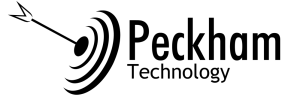Extensive experience designing custom DC-to-DC converters (power supplies) using discrete inductors, diodes, FETs, capacitors, and ICs for a wide variety of embedded applications. Designs range from wide-input voltage, varying-load designs to highly optimized regulators where both the input and load characteristics are well understood. Extensive experience with the latest advances in DC-to-DC converter technology, used to push physical limits and design some of the smallest and most efficient designs capable today. Extensive experience with almost every topology, including a variety of switching (buck, boost, switched capacitor) and linear designs.
- Summary
- The latest advances in DC-to-DC converter technology, including how to minimize size, weight, and power consumption while maximizing efficiency and meeting load requirements and minimizing impact on power source
- Linear, buck, boost, buck-boost, and switched capacitor topologies, and when each is appropriate
- Component selection, including finding the appropriate diodes (Schottky or other), inductors, and FETs, and sizing input/output capacitance correctly
- Power supply designs for ultra-sensitive RF receivers, including supplies for custom superhet and direct conversion receivers as well as off-the-shelf RF solutions like GPS modules, WiFi modules, video transmitters, video receivers, data modems, and more
- Ultra-miniature designs with strict size requirements, including low clearance (e.g.<0.125″ height) requirements while maintaining high output (e.g. 50 V @ 20 W) capability
- High-output power supplies in a high temperature environment (operating temperatures up to 70 C, with junction temperatures over 100 C)
- Extensive experience with thermal analysis of power supply designs to ensure operating junction temperatures of all components are well understood
- Full characterization of designs, including expected input/output voltage ripple, maximum diode/inductor current, thermal effects on Mean Time Between Failures (MTBF), and more
- DC-to-DC supplies from a variety of different power sources, including generators and synchronous rectifiers (with variable DC outputs), batteries (LiPo, Li-Ion, NiMH), wall worts, and a variety of standard and proprietary USB power sources, desktop computer power supplies, lab power supplies, and more
- Appropriate use of fuses, thermistors, PFETs, relays, protection diodes, and other hardware
- Appropriate use of soft starts, short-circuit protection, enable pins, external synch, modification of switching frequency, and other typical features available with the latest IC and their effects on component selection and overall circuit performance
- Experience with power supply ICs available from a variety of different manufacturers, including Analog Devices, National Semiconductor, Texas Instruments, STMicroelectronics, Linear Technology, Fairchild Semiconductor, and more
- Custom DC-DC Regulators – designs examples
- Linear 3 V supplies with low noise for GPS module power
- High voltage boost supply – 50 V switching supply with dynamic load requirements and input voltage changes for a power RF transmitter with variable duty cycle
- Multiple 2.5 V to 3.3 V buck switching regulators for microcontroller and other digital electronics
- Miniature 1.2 V and 2.5 V buck regulators for FPGA core voltages
- Custom odd-voltage power supply designs for RF amps (4.3 V, 5,2 V, 8 V, etc)
- Negative-Voltage Switched-Capacitor Supplies – low-power-requirement converters typically for amp and instrumentation amp negative supply rails (e.g. IF amps and for sensor systems) or for analog video (NTSC format) amplifiers, or integrated as part of an RS-232 converter IC
- Variable input, variable output buck supplies with dynamically switching (sometimes inductive) loads from 0 to 100 W
- Buck-boost 3.3 V switching supplies designed to operate over entire LiPo battery output voltage operating range (3 V to 4.2 V)
- And dozens more
- Input transient protection – experience with protection techniques to protect own-circuit from unknown source transients
- Over-Voltage Protection – use of zener and clamp diodes to prevent damage
- ESD Protection – use of appropriately rated diodes to meet ESD requirements
- Reverse Voltage Protection – use of clamp diodes to prevent improper reverse polarity connections
- Batteries
- Battery charging and discharging circuits for integration LiPo, Li-Ion, and NiMH chemistry batteries, including controlled current (CC) and controlled voltage (CV) charging modes, bidirectional battery switches, temperature protection, and more
- Battery characterization to determine remaining energy, appropriate under/over-voltage operating limits, safety limits, and appropriate battery life reporting to meet customer expectations
- Power supply sequencing
- Firmware implementation of state machines for appropriate turn on, and turn off techniques to operate within safety limits and provide desired functionality
- Experience with low-power modes including partial-circuit shutdown and wake up
- Power Supply Selection Circuits
- Use of comparators (including hysteresis), FETs (or relays), and programmable hardware (FPGAs and PLDs) to select among multiple sources (e.g. a battery, generator, or shore power; a battery or USB power, etc)
- Use of a microcontroller to select between battery power and USB power (with intelligent selection of USB source)
- Use of diodes for power selections circuits
- Off-the-Shelf Solutions
- USB Power supplies – experience with powering from standard USB connections (500 mA) that require handshaking, dedicated charging ports that do not require handshaking, proprietary USB connections (like the Apple-proprietary 2 A USB supply for iPad) and more
- Fully self-contained PCB-mount power supply solutions
- Selection of wall warts, USB wall adapters, and other AC-to-DC adapters for inclusion into system packaging
- Rectifiers
- Experience designing and working with half- and full-wave asynchronous and synchronous rectifiers, and more
- Regulatory
- Experience with isolation techniques for passing FCC Part 15 and FAA (DO-160) requirements for conducted emissions and susceptibility testing
- Experience with designing systems to meet FCC AC power testing
